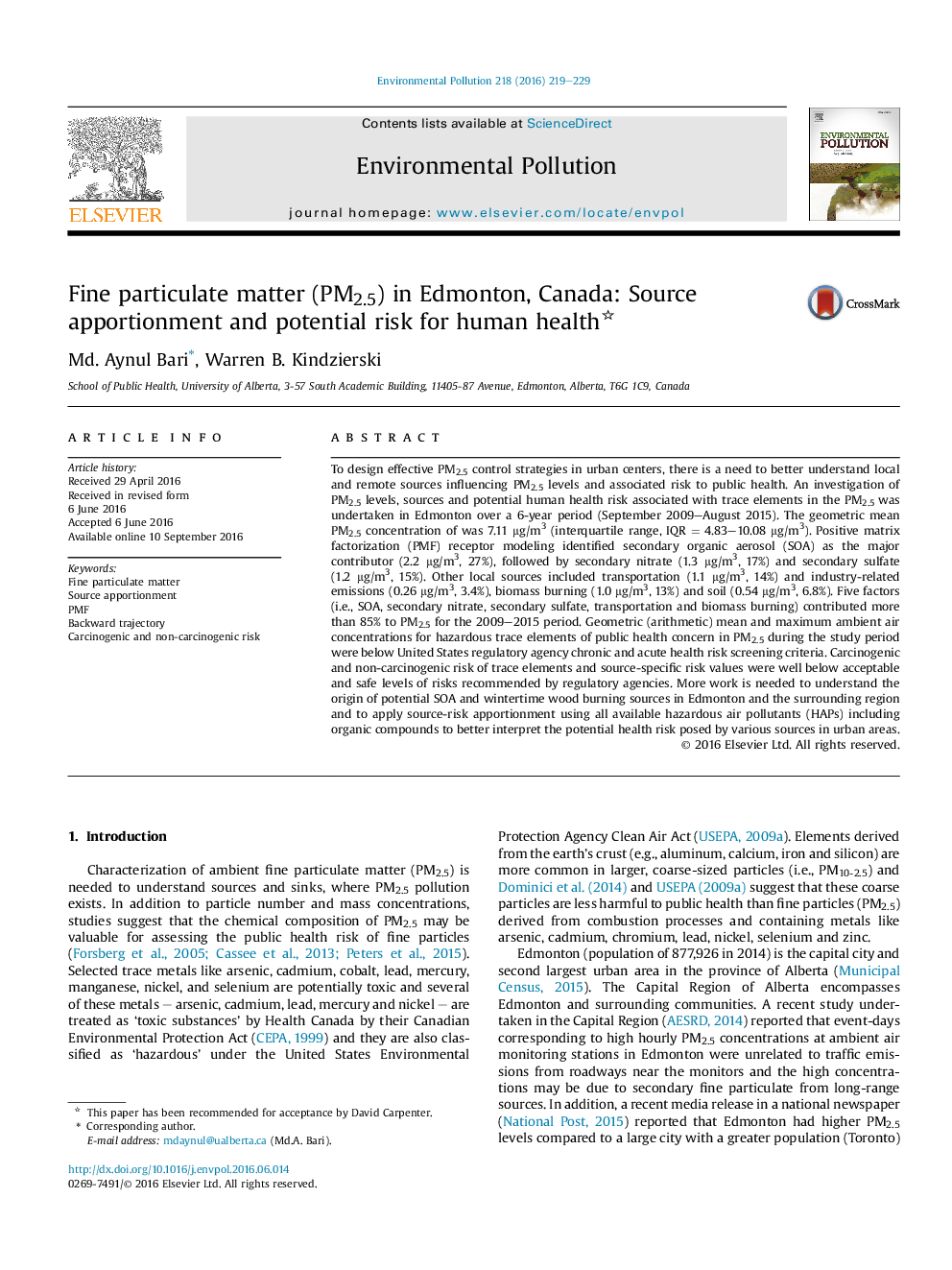| کد مقاله | کد نشریه | سال انتشار | مقاله انگلیسی | نسخه تمام متن |
|---|---|---|---|---|
| 6314566 | 1619155 | 2016 | 11 صفحه PDF | دانلود رایگان |

- PM2.5 sources and potential health risk assessed in Edmonton, Canada for 2009-2015.
- Secondary particulates, traffic and biomass burning contributed >85% to PM2.5.
- Cancer and non-cancer risk values were well below acceptable and safe levels.
- Findings are useful for developing risk management and PM2.5 control measures.
To design effective PM2.5 control strategies in urban centers, there is a need to better understand local and remote sources influencing PM2.5 levels and associated risk to public health. An investigation of PM2.5 levels, sources and potential human health risk associated with trace elements in the PM2.5 was undertaken in Edmonton over a 6-year period (September 2009-August 2015). The geometric mean PM2.5 concentration of was 7.11 μg/m3 (interquartile range, IQR = 4.83-10.08 μg/m3). Positive matrix factorization (PMF) receptor modeling identified secondary organic aerosol (SOA) as the major contributor (2.2 μg/m3, 27%), followed by secondary nitrate (1.3 μg/m3, 17%) and secondary sulfate (1.2 μg/m3, 15%). Other local sources included transportation (1.1 μg/m3, 14%) and industry-related emissions (0.26 μg/m3, 3.4%), biomass burning (1.0 μg/m3, 13%) and soil (0.54 μg/m3, 6.8%). Five factors (i.e., SOA, secondary nitrate, secondary sulfate, transportation and biomass burning) contributed more than 85% to PM2.5 for the 2009-2015 period. Geometric (arithmetic) mean and maximum ambient air concentrations for hazardous trace elements of public health concern in PM2.5 during the study period were below United States regulatory agency chronic and acute health risk screening criteria. Carcinogenic and non-carcinogenic risk of trace elements and source-specific risk values were well below acceptable and safe levels of risks recommended by regulatory agencies. More work is needed to understand the origin of potential SOA and wintertime wood burning sources in Edmonton and the surrounding region and to apply source-risk apportionment using all available hazardous air pollutants (HAPs) including organic compounds to better interpret the potential health risk posed by various sources in urban areas.
155
Journal: Environmental Pollution - Volume 218, November 2016, Pages 219-229